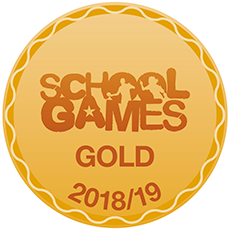Swimming Programme
By the time your child leaves Year 5 they should be able to swim a minimum distance of 25 metres (the length of an average pool) unaided. This is the National Curriculum Key Stage 2 attainment level and we endeavor to ensure that each child at Wilbraham Primary School achieves this level.
As well as being good for your child's health, swimming is a skill that could ultimately save their life. Drowning is the third most common cause of accidental death in children, and therefore it is absolutely vital that every child has the opportunity to learn to swim and gain core knowledge regarding water safety.
?
Primary School Swimming Programme
At Wilbraham Primary School, we participate in the Manchester School Swimming Programme. This year, Manchester School Swimming Programme achieved the highest ever National Curriculum pass rate of 83%. The standard on the programme is recognised nationally as a model of good practice by Sport England.
All Manchester Swimming Teachers are professionally qualified and are trained National Pool Lifeguards. Standards are high due to continued professional development in all aspects of aquatic disciplines. The safety of all children is of paramount importance to the instructors at the Manchester School Swimming Programme.
?Clothing requirements for School Swimming are as follows:
GIRLS
*Please note, that in order for your child to benefit from the swimming lessons, appropriate aquatic clothing must be worn, Should your child wish to wear items of clothing that cover up parts of the body, there are specific aquatic clothing designed for this purpose. Cotton leggings are detrimental to teaching and are a risk to health and safety therefore should not be worn. |
BOYS
|
It remains the policy of the School Swimming Programme that jewellery of any description should not be worn in the school swimming lessons. It is important that earrings in particular are removed. If you wish for your child to have pierced ears, please ensure that they are able to be removed.
Goggles are only permitted for medical reasons. Parents/carers must produce a letter from either a doctor or optician to state that your child has a medical condition and is required to wear goggles in the school swimming lessons. Once again this policy is in place for safety reasons and AfPE Safe Practice 2012 is the legislation that governs this.
The School Teacher and Swimming Teacher must be informed of any medical conditions that might affect your child during their school swimming lesson (it is important that any medication required on poolside should be clearly labelled and brought to the lesson).
?Your role is vital
As a parent/carer you play an absolutely vital role in encouraging your child to swim and learn about water safety, survival and lifesaving. There are several ways you can help your child.
Swimming lessons in school:
- Make sure your child has everything they need to participate in their school swimming lessons.
- Find out details of the swimming programme and what your child's attainment level is.
Swimming lessons at a local pool:
- Don't just rely on school swimming lessons - sign your child up for additional lessons at a local facility as soon as possible - they can start to learn as a baby.
- Ask if the lessons at your local pool follow the ASA Learn to Swim Pathway. This teaches your child using fun and games so they enjoy learning to swim, and links in with what they will be learning in their school swimming lessons.
Swimming as a family:
- Visit a pool regularly to add to your child's swimming experience.
- Go swimming as a family or with a group of friends to ensure that swimming is a fun, enjoyable and social activity.
- There are lots of games you can play with your child to boost their water confidence.
Celebrate swimming successes:
- Take an active interest in your child's progress in learning to swim and encourage them to do their best during lessons.
- Recognise and celebrate their successes at home - and don't forget the small steps are just as important as the larger milestones.
Just Keep Swimming
Once your child has learnt to swim, don't stop there. It's really important to continue with their regular lessons, to take them beyond the ability to swim a length and ensure that they have the skills to save themselves if an unexpected incident should occur.
They could then move on to joining a local swimming club and develop their skills further. They could also take part in other aquatic activities such as diving, lifesaving, synchronised swimming or water polo.
Of course being able to swim also means they will be able to take part in more adventurous water based pursuits such as sailing, canoeing and surfing.
For more information on your child's Year 4 swimming lessons, please contact your child's class teacher via our Contact Us page.
 Wilbraham Primary School
Wilbraham Primary School




